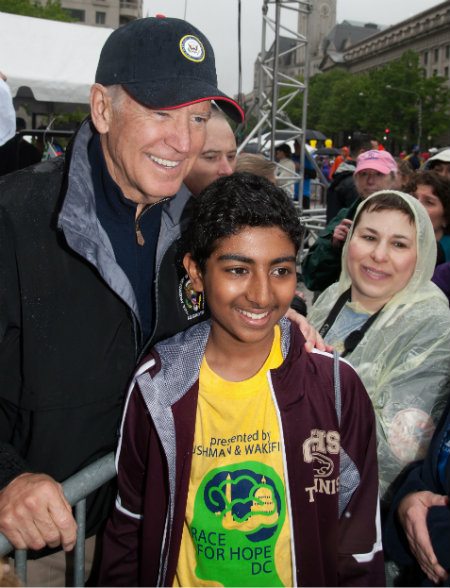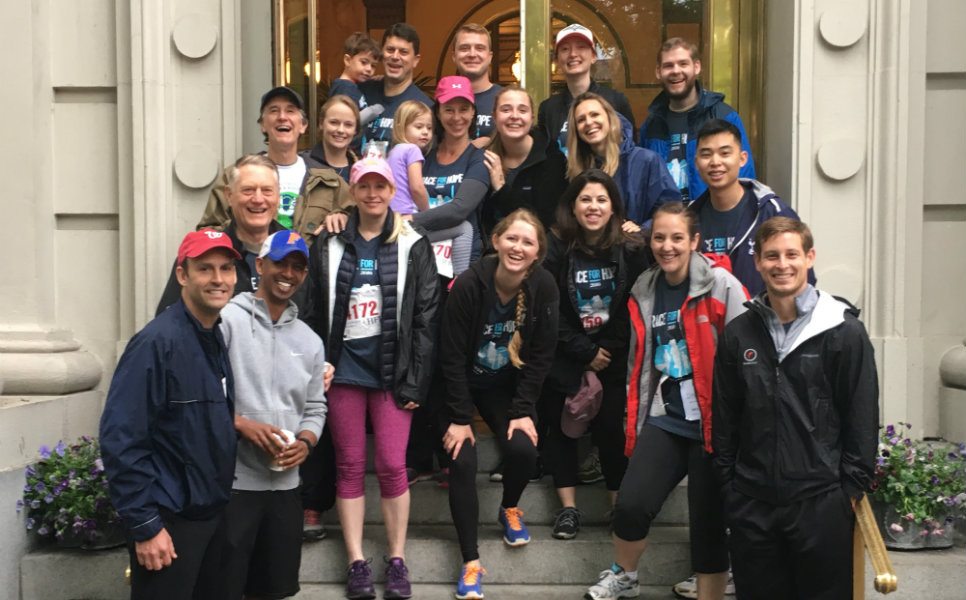This Spotlight is a part of a special blog series curated by the Case Foundation featuring Be Fearless stories from the field. Follow along with us as we meet people and learn about organizations that are taking risks, being bold and failing forward in their efforts to create transformative change in the social sector. This Spotlight is authored by Patrick C. Fine, Chief Executive Officer of FHI 360.
Every day, bold actions—large and small—inspire and shape the future. Girls in northern Nigeria defy threats from violent extremists to go to school; transgender women in Cambodia stand together against intolerance and discrimination that fuel HIV; and young refugees struggle to build new lives in foreign lands. FHI 360—a nonprofit human development organization dedicated to improving lives by advancing integrated, locally driven solutions—takes its inspiration from such daily acts of bravery and strives to be bold and Be Fearless in addressing problems around the globe.
We learn from the examples we see of people facing unimaginable hardship and with courage, initiative and determination overcome the challenges in their path and create new opportunities for themselves and their communities. Their stories inspire us to tackle the toughest problems and to be bold in the solutions we try. The issues facing our global community can’t wait, and they aren’t getting easier. We need to leverage all possible solutions, however unconventional, to meet these challenges.
The FHI Foundation—the foundation arm which exclusively supports the vision, spirit and mission of FHI 360 through strategic investments—was built on a unique impact investment model that has enabled FHI 360 to expand beyond its early focus as a small family planning organization and become a global force in human development. Once an organization with an annual operating budget of less than $3 million, FHI 360 now has expanded into more than 70 countries and all U.S. states and territories, with more than $600 million in revenue, a $150 million Foundation endowment and more than 4,000 staff around the world.
This approach—a foundation incubating projects at a non-profit organization—allows us to experiment early and often, allowing for a more creative approach to address some of the world’s most complex human development challenges. Moreover, it has enhanced FHI 360’s stability, resiliency and relevance by placing it on the cutting edge of development trends and critical issues faced by underserved populations around the world.
For example, in 2001, the FHI Foundation invested US$1 million to demonstrate the viability of antiretroviral therapy (ART) programs in resource-constrained settings in Ghana, Kenya and Rwanda, providing critical evidence that the United States Agency for International Development (USAID) needed to expand ART delivery to countries devastated by the epidemic. By 2006, FHI (now FHI 360) was implementing comprehensive HIV/AIDS prevention, care and treatment programs in 40 countries. As of September 30, 2015, U.S. government funding through multiple partners and organizations was supporting life-saving ART for 9.5 million people.
Today, FHI 360 continues to stimulate new ideas and incentivize innovations. With its Catalyst Fund, the FHI Foundation provides annual grants totaling $500,000 to FHI 360 staff to develop approaches, tools or products that address human development challenges. The Catalyst Fund competition brings together FHI 360 staff from different regions, sectors and specialties, many of whom may not traditionally work together, to allow for a space for staff to reach beyond their bubble and develop forward-thinking approaches to promote the health and well-being of individuals and communities. Funded initiatives are delivering innovations such as the use of drone delivery to increase access to medical supplies in rural Kenya, the development of a mobile-based test-prep app to help students prepare for exams in Myanmar, and a web-based application to help monitor child learning and health progress in classrooms globally.
While some organizations allow risk to become paralyzing, even in the face of an immediate crisis, the FHI Foundation/FHI 360 relationship proves what can be accomplished when urgency drives the quest for solutions and when financial stability allows for the freedom to make bold moves with high stakes, even when the outcome is uncertain. A mixture of private and public funds, a strategic investment model and a commitment to tackle the world’s most challenging problems head on, ensure FHI 360’s continued success and the continued benefits to those we serve around the world.
We believe that the time for bold action is at hand. Yet, we will only succeed if we work together and if we push ourselves to ask the uncomfortable questions, to learn from failure and to dare to challenge the status quo. We must be willing to see and do things differently, to develop new skill sets, devise new structures and conceive new partnerships. We must anticipate, adapt and enthusiastically embrace change to maximize our impact in the world.
Feeling inspired? If you’re ready to begin your own Be Fearless journey start by downloading the Case Foundation’s free Be Fearless Action Guide and Case Studies.






